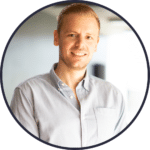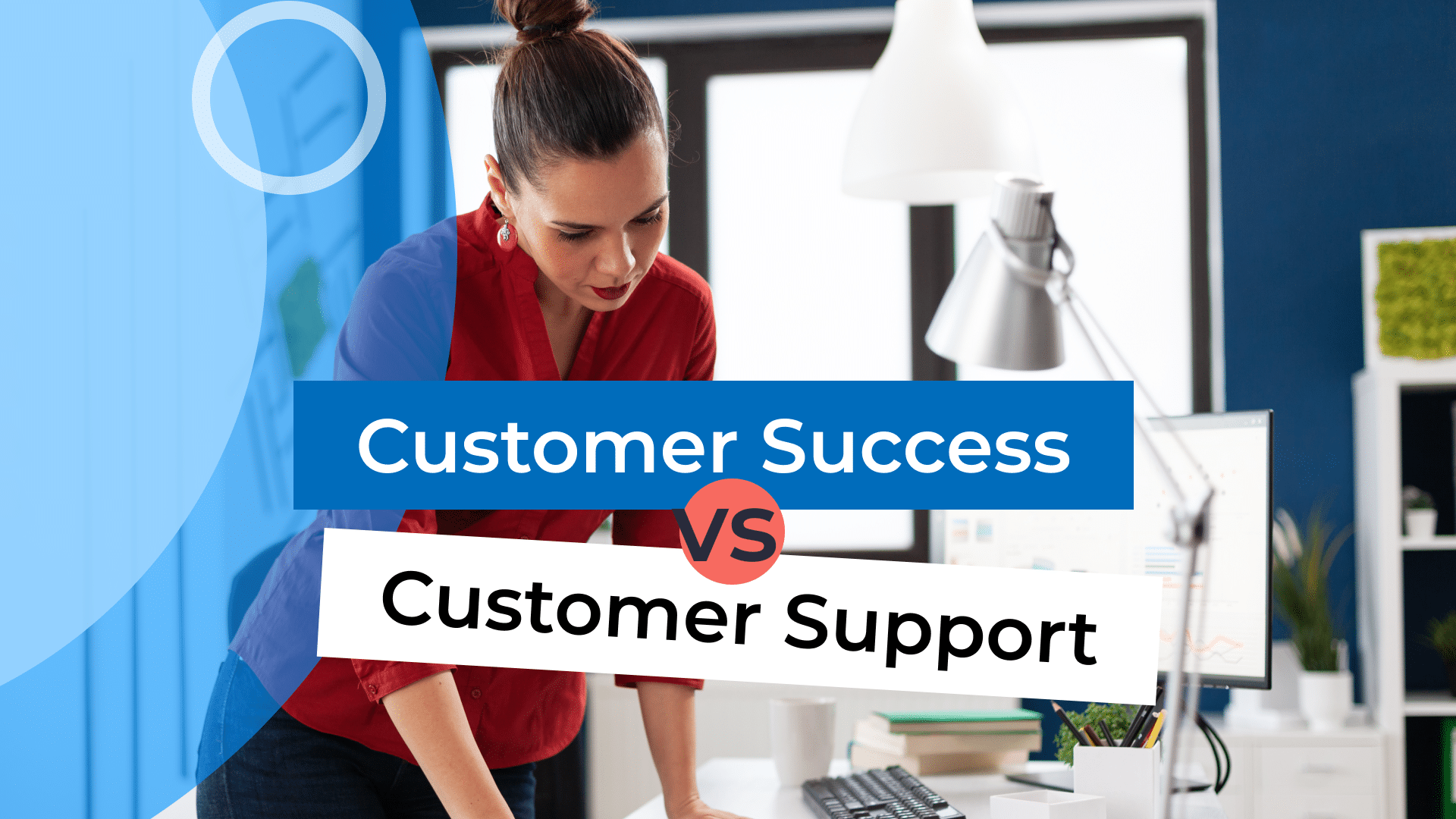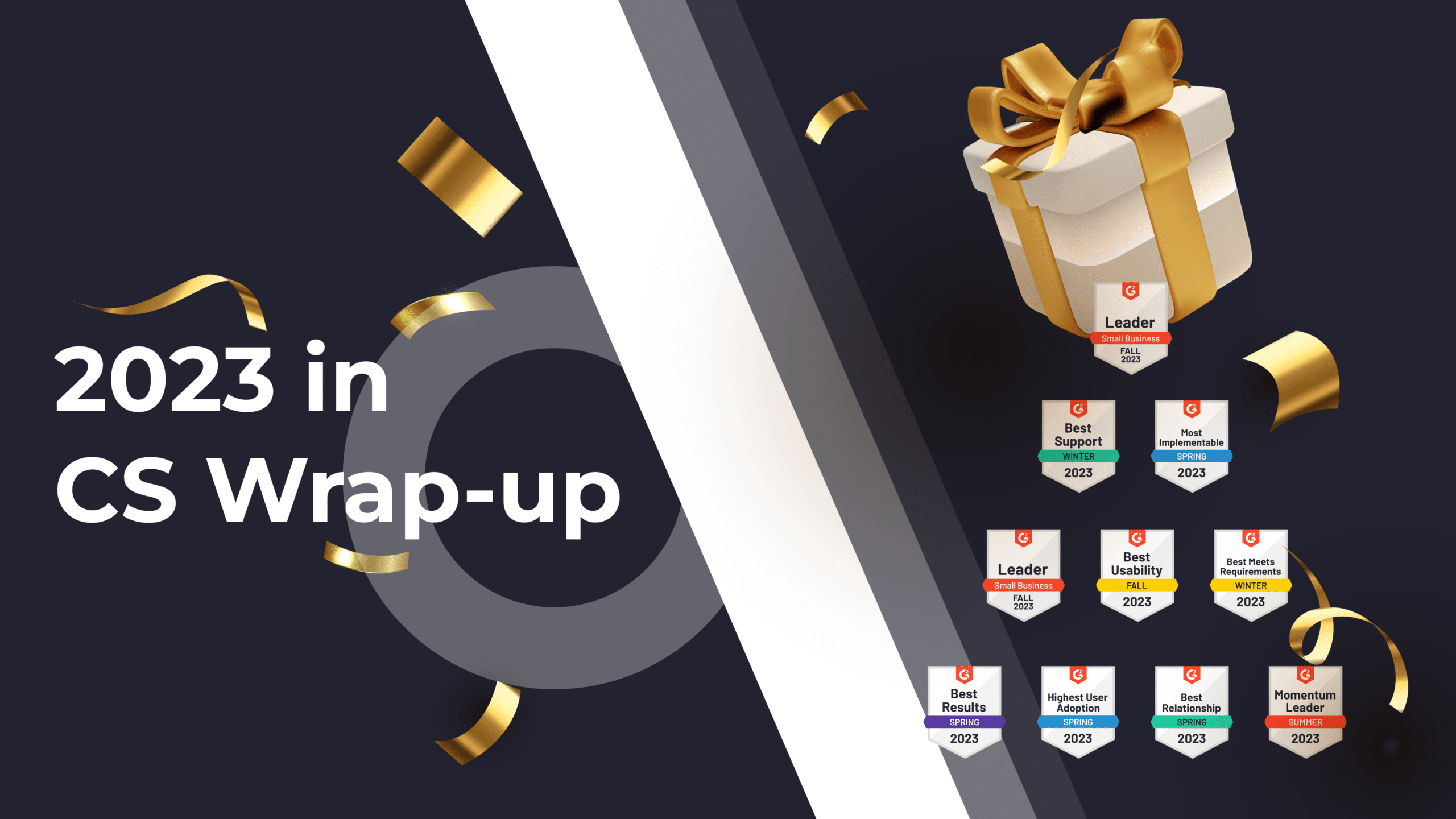Our lives in customer success are in a constant state of guesstimating our customers’ sentiment as to our product or services. That’s especially true of churn prediction.
Even when we do have hard data, the journey to making it make sense is often laborious, bewildering, and miles away from cost effective.
So what can we do?
How do we find the sacred formula to churn prediction? Does it even exist?
Today, I’m proposing we go on that quest together. We’ll pass through:
- What churn prediction actually is, how it works, why do it in the first place, and everything that goes into making it as efficient as possible
- Then we’ll plunge straight into how to build such a model for you, your CSMs, and the entire business for that matter (after all, nobody prioritizes making a churn prediction model until you actually have one, at which point everyone needs access to it).
- I’ll also look at some AI tools, spells, and tips from professionals in the CS space.
What Is a Churn Prediction Model?
Churn prediction models are data-backed mathematical extrapolations with the chief purpose of indicating how a business’ customer churn rate is going to evolve, helping predict revenue retention and medium-to-long-term business solvency.
Predictive churn models are often not simple, but they also don’t have to be complicated to be useful. Churn models exist on a spectrum – each one is engineered by a business for that business’ needs. Not literally though – literally, they’re typically made by the head of customer success or a similar business function that oversees customer retention efforts while having their finger on the pulse of the overall organizational objectives.
Under point 1 of “how to build a churn prediction model,” you’ll see a simple example of a churn prediction model that may suit the needs of most smaller SaaS operating on a budget.
Why Churn Prediction Is Important
Churn prediction is an essential practice in SaaS, allowing companies to not only predict their NRR (net revenue retention), but to proactively act towards saving those accounts, thus lowering the overall customer churn rate. Here are some more reasons to start predicting churn:
- Improving customer retention. On a very basic level, churn prediction works as a form of churn prevention – in fact, that’s its main purpose. By creating a model to understand factors that commonly lead to customer churn, a CS team is able constantly look for those precursors.
- Smarter resource allocation. Proactivity will almost always be more cost effective than reactivity. Simply put, having a team and process in place to handle churn before it happens is on the whole less costly than reacting to churn. Customers leave for any number of reasons – for which you have to waste time and money to figure out if you’re not prepared with a churn prediction model.
- Efficiently protecting revenue. Say a big account is about to churn. In fact, after some digging, you see they’re almost out the door. Oh no! Had you had a churn prediction model, you would’ve known earlier and had more time to come up with a smarter strategy to actually save that customer and keep their NRR.
- Better products and CX. Analyzing churn religiously will bring to light patterns of behavior that can tell you: what your product is doing right, what isn’t working, how you can improve the UX, what new features would be useful, and so on. Simple churn prediction leads to better products.
- Understanding what works. Too often when operating without hard data, product can change features that work well for your customers’ purposes. Sometimes those features are part of the day-to-day, value-adding workflow for some users. Monitoring churn prediction can help focus your efforts on the parts of your product that actually need improvements, also providing the hard numbers you need to prove that point.
There is a trade-off point, however, between the usefulness of a churn model and the time spent on creating it. If it becomes too labor-intensive to create, too complex to read, or too difficult to update, you’re doing it wrong. Churn models need to be efficient, cost-effective, and must be easy to use and read for anyone on the CS team and other stakeholders, and should ideally employ some form of behavioral customer segmentation.

How to Build a Churn Prediction Model
Now that we’ve covered the what and the why, let’s check out the prerequisites and how to actually build such a model.
↪ Prerequisites:
- The number of current customers
- The number of new customers gained this month
- Your current churn rate (formula here)
- A thought-out list of data-driven customer health scores, particularly those that are typically signs of churn.
- A way to set and track those health scores at scale – you can use an excel spreadsheet, however, it will be far from ideal and you’ll be stuck in spreadsheet land for years. A good alternative is a customer success platform that can monitor those health scores via automation and serve as an ally for your churn prediction model, alerting you when churn precursors show up
1. Use Our Calculator for a Free, Quick Estimate
If you’re looking for a nice, clean, simple graph that can predict the evolution of your churn rate over the next year, we’ve got you covered!

Our SaaS Customer Churn calculator is perfect for startups or bootstrapped SaaS. If your graph looks bad, then maybe it’s time to redirect some budget towards more advanced churn prediction and prevention tactics. But for starters, a graph such as this can provide a great overview of your next 12 months.
2. Do It Yourself
1. Conduct a Churn Analysis
Start with a churn analysis. The goal is to determine the following:
- Why your customers leave
- Why your customers stay
- How to identify churn precursors
- How to turn those metrics into insights
- How to win those customers back
- How to prevent churn for at-risk accounts
You can follow our churn analysis steps here, but the gist of it involves picking between multiple types of investigations and sticking to the respective methodology:
- Cohort analysis. In other words, analyzing groups of customers based on your customer segments starting from account details such as month of purchase, demographics, acquisition source, or many other factors.
- Customer behavior analysis. Going even further you can use the health scores mentioned earlier to implement an advanced form of behavioral segmentation and derive insights for each segment. Some example health scores: in-app actions, engagement score, usage ratio.
- Voice of the customer analysis. When you’ve got thousands of accounts under your belt, it can be overwhelming to analyze them correctly at scale. At that point, you can turn to your best customers (by whatever criteria you pick), gather their direct feedback, and use that for churn prediction and other insights.
- Gap analysis for customer service. A gap analysis is an advanced tool to gauge how well you’re servicing your customers. But for SaaS, it can be invaluable, particularly when you’ve got hundreds of accounts or more, each with different subscription plans. Gap analyses allow you to not only predict churn, but also gauge customer sentiment.
2. Create Your Predictive Model
After the churn analysis is complete, you’ll have the usual suspects for signs of churn and you’ll be able to track them. This is the point where you should come up with:
- A method for tracking churn precursors reliably and at scale
- Alerts that go out to lead CSMs whenever their accounts become at-risk
- A scalable process for engaging with those customers
- A script of tested, pre-written responses and offers to help save them
Once you have all this in place, it’s all a matter of perfecting the way you interact with your customers, acknowledging you won’t be able to save everyone, and continuously improving your churn prediction process.
↪ Note: Some CS teams choose to code their own model in Python, BI tools, or through machine learning algorithms. While that may serve the needs of larger organizations, it’s often counterproductive to throw that much time, money, and dev hours on churn prediction. CS leaders need to strike a delicate balance when making a decision – considering product complexity, dev availability, internal CS priorities, business stability, market dynamics, customer sentiment, and of course, the current churn rate.
3. Act On Your Insights
A predictive model will enable uncommon insights into the way your customers think, how your product works, what customers typically want to achieve, and how your product helps them do that.
As such, you can use this analysis to improve your product, your services, and how you interact with your clients. Simply being proactive with customer engagement does not make a better product. It’s up to you to pass on relevant information to the product team and ensure they act on it.
3. Use Tools like CSPs or Onboarding Tools
At Custify, one thing we pride ourselves with is our concierge onboarding wherein we sit with you to determine your needs and set up your account for success. That also includes churn prediction.
Once you’re equipped with the information needed to predict churn, you can simply set up health scoring and automation playbooks that predict churn for you. As such, you can free up your schedule to actually deal with those at-risk accounts in a smart way through proactive customer engagement, while Custify does the hard work of monitoring account metrics and anticipating churn.
4. Use AI LLMs such as ChatGPT 4
AI is not something new anymore, it’s a daily facet of our digital lives and those who want to succeed must leverage it to their ends before their competition does so more effectively.
One such use for ChatGPT for customer success is churn prediction.
Feeding Data into AI Engines
To successfully employ AI for churn analysis, you’ll need to feed account data into GPT 4.0 or your AI engine of choice. The problem is not many people are able to do so in a way that protects customer data while including historical data to make the predictive model effective.
ChatGPT Prompts & Template for Predictive Churn Modeling
That being said, AI can be extremely useful if you are indeed able to feed the necessary data into it. Let’s look at some prompt templates and examples.
Using the GPT engine, we’ve determined the best possible structure for an AI churn prediction prompt:
1. Prompt Structure:
1. Introduction and Context:
Briefly introduce the purpose of the analysis (churn prediction) and provide any relevant context about the data.
2. Data Overview:
Describe key features and data points relevant to churn prediction. Ensure that you highlight the important aspects that can influence customer churn.
3. Request for Prediction:
Clearly ask your AI engine to predict the likelihood of churn based on the given dataset.
4. Optional: Specific Questions:
If there are specific features or aspects you want the model to pay attention to, such as explicitly mention them in separate questions.
5. Closing and Summary:
Conclude the prompt by asking for any additional insights or explanations that could help in understanding the model’s reasoning.
2. Prompt Example:
1. Introduction and Context:
You are a Customer Success Manager aiming to predict customer churn. You have provided data from the past six months, including customer interactions, usage patterns, and feedback.
2. Data Overview:
The dataset includes customer ID, usage frequency, support ticket history, customer satisfaction scores, and any other relevant data points. High usage frequency, positive feedback, and low support ticket history are generally associated with lower churn rates.
3. Request for Prediction:
Based on the provided data, please predict the likelihood of churn for each customer over the next month.
4. Optional: Specific Questions:
a. Which features seem to have the most significant impact on churn predictions?
b. Can you highlight any specific trends or patterns in customer behavior that contribute to churn?
5. Closing and Summary:
Please provide a detailed analysis, and feel free to explain the reasoning behind the predictions. Any additional insights would be valuable for proactive customer retention strategies.
Important Notes:
ChatGPT and other AI models were not specifically designed to predict customer churn and as such may: provide inaccurate results, come to premature conclusions, state the obvious, present very broad observations, or generally offer unhelpful advice, lacking context and logical reasoning.
For optimal results that are as useful and as accurate as possible, the data you provide must be relevant and must follow data hygiene principles. We also recommend following the above prompt structure as much as possible.
How Customer Success Leaders Think about Churn Prediction Today
1. Simple churn prediction means you’re late to the game

Doug Norton, Senior Director of Customer Success @ BILL
2. Building out a churn prediction model

Crystal McHenry, Client Enablement Product Manager @ Ambassador Software

Parul Vij Chopra, Head of Customer Success @ AVATOUR
3. Having an established churn prediction process

- Learn why some customers leave and why others stay and buy more.
- Quantify the reasons.
- Identify upstream factors and generate hypotheses.
- Collect data and screen variables using factor analysis.
- Develop predictive models.
- Implement, monitor, and continuously improve.
Ed Powers, Customer Success Leader & Principal Consultant @ Service Excellence Partners

Nancy Raia, Customer Success Manager @ TRUCE Software

Manuel Harnisch, VP of Customer Success @ FOSSA

Data points we look at: Relationship, Adoption (product metrics), Onboarding, Customer Fit, Bugs, Feature Requests, outside influencers. From there, CSM tags the customer as low risk, medium risk, or high risk (red, yellow, green).
Kevin Williams, SVP Customer Success @ Tracer
4. On Using AI for Churn Prediction
Artificial intelligence-powered tools that leverage natural language processing, for example, are able to perform sentiment analyses and assess customer reviews, emails, and even phone calls for tone and terminology indicators of churn.
Falon Fatemi, CEO & Co-founder of Fireside, in a 2019 Forbes article titled “How To Conquer Customer Churn with AI”

Doug Norton, Senior Director of Customer Success @ BILL

Philipp Wolf, Founder & CEO @ Custify

Also, AI mostly gives a good prediction but is mostly a black box for stakeholders, one should also search for the cause of churn that’ll eventually help in improving churn rate, like behavioral segmentation or even simple logistic regression would be of use.
Muhammad Saad Khalid, Senior Data Specialist @ MarketLytics
How’s Your Prediction Going?
With a thought-out churn prediction strategy and a little bit of work, you’ll soon be reaping the benefits of your efforts – primarily reflected in your NRR.
Having accurate churn data means you’re equipped to face any and all precursors that come your way. That kind of peace of mind over what you can and cannot control eases the path to effective, scalable customer success. Are you ready to take that next step?





